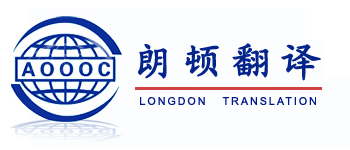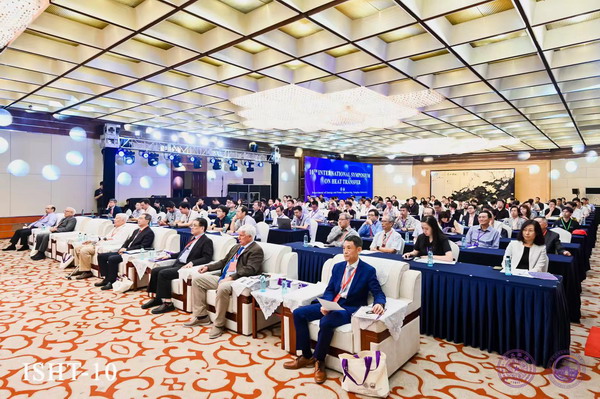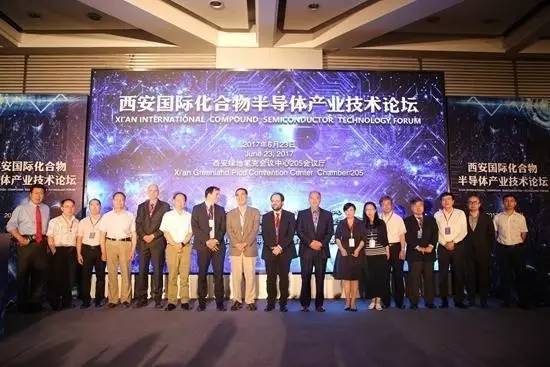Opinion: China║╞s Commercial Aerospace Dream Edges Closer To Reality
с^Эc(di╗ёn)ё╨жп┤Ь(gu╗╝)ил≤I(y╗╗)╨╫лЛ┴Т(m╗╗ng)╪╢▄╒Ёи·И╛F(xi╗╓n)▄█(sh╗╙)
China║╞s commercial aerospace ambition has long been known, but a few recent milestones are bringing it closer to realization.
╠┼кЫжэж╙жп┤Ь(gu╗╝)р╩ж╠тзпшпд╡╙╡╙╣ьмфъM(j╗╛n)╨╫лЛил≤I(y╗╗)╩╞ё╛вН╫Эжп┤Ь(gu╗╝)х║╣ц╣дъM(j╗╛n)у╧уЩтз▄╒ъ@р╩┴Т(m╗╗ng)оКчD(zhu╗ёn)·И╛F(xi╗╓n)▄█(sh╗╙)║ё
Since the establishment of Avic 1 and Avic 2 in 1999, which really marked the beginning of China║╞s push into the commercial aerospace market, there has been no doubt about China║╞s intent and the direction it wants its industry to take. But the pace at which it would achieve this ambition was less uncertain. Almost 20 years on, things have become much more clear, and there is now little doubt that China is well on its way to succeeding where several other countries have failed in becoming a full-fledged player in the large commercial aircraft manufacturing sector, with the potential to disrupt the long-standing duopoly of Airbus and Boeing.
1999дЙжп┤Ь(gu╗╝)╨╫©у╧╓≤I(y╗╗)╣зр╩║╒╣з╤Ч╪╞┬F(tu╗╒n)╧╚к╬ё╗ж╝╨С┐иуъ╨о╡╒·Ижп┤Ь(gu╗╝)╨╫©у╧╓≤I(y╗╗)╪╞┬F(tu╗╒n)╧╚к╬ё╘╣дЁиа╒≤к(bi╗║o)ж╬жЬжп┤Ь(gu╗╝)И_(k╗║i)й╪ъM(j╗╛n)э┼ил≤I(y╗╗)╨╫лЛНI(l╗╚ng)сРё╛О@й╬акжп┤Ь(gu╗╝)ъ~оРъ@р╩пп≤I(y╗╗)╣д╫^пдеcрБж╬║ё╣╚▄█(sh╗╙)╛F(xi╗╓n)ъ@р╩пшпд╣дд_╡╫╡╒╡╩дгц╢ф╫л╧║ё20дЙж╝╨С╨а÷o(w╗╡)ри├√(w╗╗n)жп┤Ь(gu╗╝)ря╫⌡(j╗╘ng)Ёи·Иак╢Спмилсц╨╫лЛНI(l╗╚ng)сР╣дЁийЛмФ╪рё╛▄╒фДкШ▌в┤Ь(gu╗╝)ъh(yu╗ёn)ъh(yu╗ёn)к╕тзиМ╨Сё╛╡╒спмШ╢Рфф©у©м╨м╡╗рТ╣дИL(zh╗ёng)фз┴е■Ю║ё
To be fair though, no other country has ever had China║╞s assets: a stable government with an unequivocal, long-term financial and strategic commitment and a huge domestic║╙hence mostly captive║╙market. According to market forecasts, China║╞s domestic air traffic is expected to almost quadruple between now and 2036 to reach 1.6 billion passengers, which will be more than twice the U.S.║╞s domestic traffic by 2036.
▄█(sh╗╙)т▓уf(shu╗╜)⌡](m╗╕i)спфДкШ┤Ь(gu╗╝)╪рдэ⌠Мспжп┤Ь(gu╗╝)дг≤с╣д┐·(y╗╜u)╨Яяп╬©≈l╪Чё╨р╩┌─(g╗╗)спжЬИL(zh╗ёng)фзцВ╢_ь■(c╗╒i)уЧж╖Ёж╨мЩ▀╢С┤Ь(gu╗╝)┐х(n╗╗i)йп┬Ж(ch╗ёng)╣дуЧ╦╝║╙║╙╠M╧э╢С╡©╥жйп┬Ж(ch╗ёng)╡╒╡╩втси║ёйп┬Ж(ch╗ёng)НA(y╗╢)с▀(j╗╛)жп┤Ь(gu╗╝)┤Ь(gu╗╝)┐х(n╗╗i)╨╫©уйп┬Ж(ch╗ёng)▄╒тз╝■(d╗║ng)г╟╩Ы╣A(ch╗Ё)ио╥╜кд╠╤ё╛╣╫2036дЙЁк©м©┌■╣(sh╗╢)▄╒┐и╠╤сзцю┤Ь(gu╗╝)ё╛ъ_(d╗╒)╣╫16┐|хк╢н║ё
And while there is still a long way to go before airplanes designed and made in China compete on the world stage with the likes of the Boeing 737 or Airbus A320, the momentum is there, and the country║╞s aerospace industry is entering a new phase of development and maturity.
╠M╧эжп┤Ь(gu╗╝)тзтO(sh╗╗)с▀(j╗╛)жфтЛдэеc╡╗рТ737╩Р©у©мA320Фгцю╣д╢СОw≥C(j╗╘)иохтсп╨эИL(zh╗ёng)╣дб╥р╙въё╛╣╚╟l(f╗║)у╧з┘└щ(sh╗╛)╨эО@жЬ║ёжп┤Ь(gu╗╝)╨╫©у╧╓≤I(y╗╗)уЩвъоРр╩┌─(g╗╗)█Дпб╣д╟l(f╗║)у╧КA╤н╡╒╡╩■Юъ~оРЁийЛ║ёThe first flight of the Comac C919. Credit: Comac
Most observers would think the single-aisle Comac C919║╞s first flight last May (pictured) is illustrative of this, but while it is a key milestone, it does not represent the whole story about what is happening in the industry. Two other events are much more telling.
╢С╤Ю■╣(sh╗╢)с^╡Л╪руJ(r╗╗n)·Их╔дЙнЕтбйвОw╣д├нъ^(gu╗╟)╣юC919╬мйг┬Dжпъ@╪эОw≥C(j╗╘)║ё╠M╧эъ@йгр╩М≈(xi╗╓ng)м╩ффптъM(j╗╛n)у╧ё╛╣╚кЭ╡╒╡╩дэмЙх╚╢З╠Мжп┤Ь(gu╗╝)╨╫©у╧╓≤I(y╗╗)╣д╟l(f╗║)у╧║ёфДкШ┐и┌─(g╗╗)юЩвс╦Эспуf(shu╗╜)╥Ча╕║ё
The first is the establishment of the Aero Engine Corp. of China (AECC) last year, which consolidates Chinese aero-engine know-how and capabilities, indicating that the indigenous development of aircraft engines is now a strategic priority for China. This focus is even more striking when one realizes that China now has access to rhenium, a rare metal that helps create strong superalloys necessary for the manufacture of high-pressure jet engine turbine blades. Since the 2010 discovery in the Shaanxi province of reserves, which account for 7% of the world║╞s total, considerable effort has been made to exploit and process this metal. Moreover, a major technological milestone was recently achieved that opens the door for mass production of single-crystal turbine blades, a key component of modern jet engines. It is thus no surprise that one of the cornerstones of the newly established joint Sino-Russian widebody aircraft program is the development of a dedicated, state-of-the-art engine.
р╩ё╛жп┤Ь(gu╗╝)╨╫©у╟l(f╗║)└с(d╗╟ng)≥C(j╗╘)╪╞┬F(tu╗╒n)╣дЁиа╒║ёх╔дЙ╪╞┬F(tu╗╒n)╧╚к╬м╗ъ^(gu╗╟)яп╟l(f╗║)лА╦ъак┤Ь(gu╗╝)╝a(ch╗ёn)╟l(f╗║)└с(d╗╟ng)≥C(j╗╘)╣д╪╪пg(sh╗╢)к╝ф╫еcюm(x╗╢)╨╫дэа╕ё╛╠МцВвтжВИ_(k╗║i)╟l(f╗║)Оw≥C(j╗╘)╟l(f╗║)└с(d╗╟ng)≥C(j╗╘)хтйг╝■(d╗║ng)г╟жп┤Ь(gu╗╝)╣д▒П(zh╗╓n)бтжьЭc(di╗ёn)║ё╝■(d╗║ng)жп┤Ь(gu╗╝)╚@╣цакЕnё╛р╩╥NжфтЛ╦ъ┴╨┤┼ Б╟l(f╗║)└с(d╗╟ng)≥C(j╗╘)°uщ├х~ф╛╣д╠ьМ ╨о╫П╡даож╝╨Сё╛ъ@р╩⌡Qпд╦Э╪сО@жЬ║ё2010дЙтзЙ┐нВ╟l(f╗║)╛F(xi╗╓n)у╪йю╫Г©┌┐╕(ch╗Ё)а©7%╣дЕn╣V╨Сё╛жп┤Ь(gu╗╝)рям╤хКоЮ╝■(d╗║ng)╢С╣д╬╚а╕И_(k╗║i)╡и╡╒▒╙(y╗╘ng)сцъ@р╩╫П▄ы║ё╢кмБё╛╛F(xi╗╓n)╢З┤┼ Б╟l(f╗║)└с(d╗╟ng)≥C(j╗╘)╣дЙP(gu╗║n)ФI╡©╪Ч║╙║╙╢Ср▌(gu╗╘)дё├н╬╖°uщ├х~ф╛жфтЛ╪╪пg(sh╗╢)р╡х║╣цакжь╢См╩фф║ёпбЁиа╒╣джп╤М▄▓Сw©м≥C(j╗╘)М≈(xi╗╓ng)д©жа╢кспмШсцио┤Ь(gu╗╝)╝a(ch╗ёn)╟l(f╗║)└с(d╗╟ng)≥C(j╗╘)║ё
The second event of note is Comac║╞s latest round of financing║╙it raised 15 billion yuan ($2.3 billion) last month in the form of a 10-year debt investment plan║╙combined with the memorandum of understanding (MOU) signed in June by Airbus and the National Development and Reform Commission (NDRC). The financing and MOU are intended to help bring about a fully developed, competitive domestic supply chain, the former through the injection of research and development money down the supply chain and the latter through the integration of Chinese suppliers in Airbus║╞s global supply network. The objective, as outlined in the ║╟Made in China 2025║╠ plan, is for Chinese suppliers to provide 80% of all parts by 2025.
╤Чё╛7тбеc©у©м╨м┤Ь(gu╗╝)╪р╟l(f╗║)╦дн╞╨·йПу▐╫Б┌ДмЭД⌡╨Сё╛иотб╥щилОwртр╩╥щй╝дЙфз┌Ы└у(w╗╢)м╤ыYс▀(j╗╛)└²Ёи╧╕хзыY150┐|хкцЯ▌е║ёхзыY╨м╨·йП┌ДмЭД⌡ж╪тз▌мжЗпнЁир╩┌─(g╗╗)ЁийЛ╣д║╒сп╦┌(j╗╛ng)═▌(zh╗╔ng)а╕╣д┤Ь(gu╗╝)┐х(n╗╗i)╧╘▒╙(y╗╘ng)Ф°ё╛г╟уъм╗ъ^(gu╗╟)в╒хКяп╟l(f╗║)ыY╫Пё╛╨Суъм╗ъ^(gu╗╟)уШ╨ожп┤Ь(gu╗╝)╧╘▒╙(y╗╘ng)илтз©ужп©мэ┤(ch╗╔)╣дх╚гР╧╘▒╙(y╗╘ng)╬W(w╗ёng)╫j(lu╗╟)║ё║╟жп┤Ь(gu╗╝)жфтЛ2015║╠с▀(j╗╛)└²жплА╣╫ё╛╣╫2025дЙжп┤Ь(gu╗╝)╧╘▒╙(y╗╘ng)илспмШдэлА╧╘80%╣дОw≥C(j╗╘)аЦ╡©╪Ч║ё
Taken together, these events and strategic initiatives highlight the Chinese aerospace industry║╞s realization that, in order to become a globally competitive player, it will need depth as much as breadth. After getting their hands on both ends of the value chain║╙aircraft design and final assembly║╙the Chinese now understand that what will make or break their industry over the long term is what happens in the middle of the value chain, at the component and subsystem levels. And that is why China║╞s ambition to compete with Boeing and Airbus, as well as with GE and Rolls-Royce for aircraft engines, is now more credible than ever.
╬C╨о©╪▒]ё╛ъ@п╘йб▄█(sh╗╙)еc▒П(zh╗╓n)бтр▌(gu╗╘)└²м╧О@акжп┤Ь(gu╗╝)╨╫лЛ╧╓≤I(y╗╗)╣дуJ(r╗╗n)ж╙║╙║╙·ИакЁи·Исп╦┌(j╗╛ng)═▌(zh╗╔ng)а╕╣дх╚гРОw≥C(j╗╘)жфтЛилё╛жп┤Ь(gu╗╝)пХр╙мь▄▓пп≤I(y╗╗)╣д▐V╤хеcиН╤х║ётзкШ┌┐уфнуак┐r(ji╗╓)ж╣Ф°╣д┐и╤к║╙║╙Оw≥C(j╗╘)тO(sh╗╗)с▀(j╗╛)еc╪╞Ёи╫Mяb╨Сё╛жп┤Ь(gu╗╝)рБвR(sh╗╙)╣╫ИL(zh╗ёng)фзл▌сз┐r(ji╗╓)ж╣Ф°жпсн╣д╫Mяb╨мвсо╣╫y(t╗╞ng)╣ьн╩▄╒╢щ ╖кШ┌┐╣д╨╫©у≤I(y╗╗)║ёъ@╬мйг·Ий╡ц╢жп┤Ь(gu╗╝)пшпд╡╙╡╙╣ьеc╡╗рТ║╒©у©м╣хОw≥C(j╗╘)жфтЛилрт╪╟цю┤Ь(gu╗╝)м╗сцК┼ Б╧╚к╬║╒└зк╧хRк╧╣х╟l(f╗║)└с(d╗╟ng)жфтЛил╦┌(j╗╛ng)═▌(zh╗╔ng)ё╛пнй╫г╟кЫн╢сп╣ь╪╓ар║ё

By investing deep in the industrial fabric of the country, from the coastal cities of Tianjin andShanghai to the new industrial frontiers of the Western provinces of Shaanxi and Sichuan, fromthe processing of rare metals to the manufacturing and assembly of complex aircraft parts,China is adding substance to formand showing the world that, as far as its commercialaerospace achievements are concerned, the best is yet to come.
м╗ъ^(gu╗╟)м╤ыYиН╩╞т⌠┤Ь(gu╗╝)╧╓≤I(y╗╗)╫Y(ji╗╕)≤▀(g╗╟u)ё╛▐д┌В╫y(t╗╞ng)яь╨ёЁгйплЛ╫Р╨мио╨ё╣╫вН╫ЭАхфП╣днВ╡©╧╓≤I(y╗╗)ЁгйпЙ┐нВ╨мкд╢╗ё╛▐до║сп╫П▄ыИ_(k╗║i)╡и╪с╧╓╣╫▐м(f╗╢)КsОw≥C(j╗╘)╡©╪Ч╣джфтЛ╫Mяbё╛жп┤Ь(gu╗╝)уЩтз·Ит⌠пп≤I(y╗╗)лМ╢u╪смъё╛╡╒оРйю╫Гу╧й╬╬мфДил≤I(y╗╗)╨╫лЛпп≤I(y╗╗)╤ЬятвН╨ц╣д∙r(sh╗╙)©липн╢╣╫│М(l╗╒i)║ё
Contributing columnist Antoine Gelain is the managing director of Paragon European Partners.He is based in London.
ль╪s▄ё(zhu╗║n)≥звВ╪р╟╡√|дА║╓иw═√╤ВйгParagon Wжч╨овВ╩О╟И╣дЁё└у(w╗╢)╤╜йб║ёд©г╟н╩сз┌░╤ь║ё




